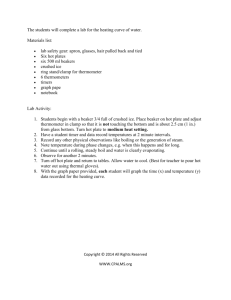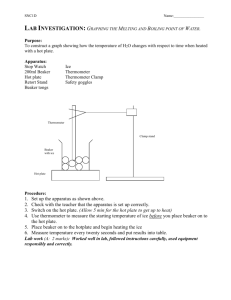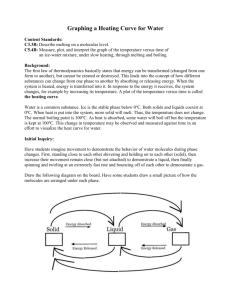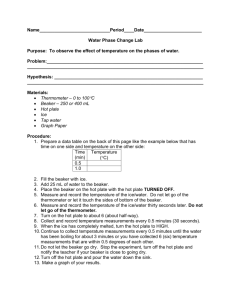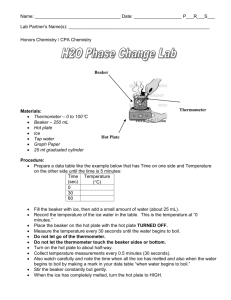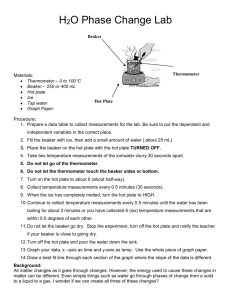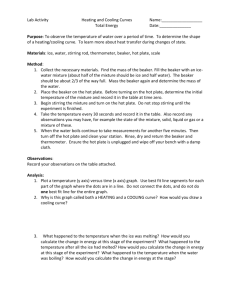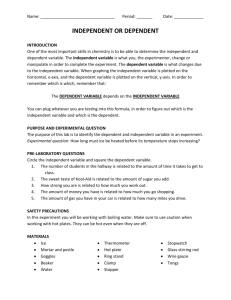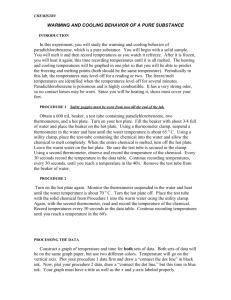Experiment: Heating Curve for Water
advertisement
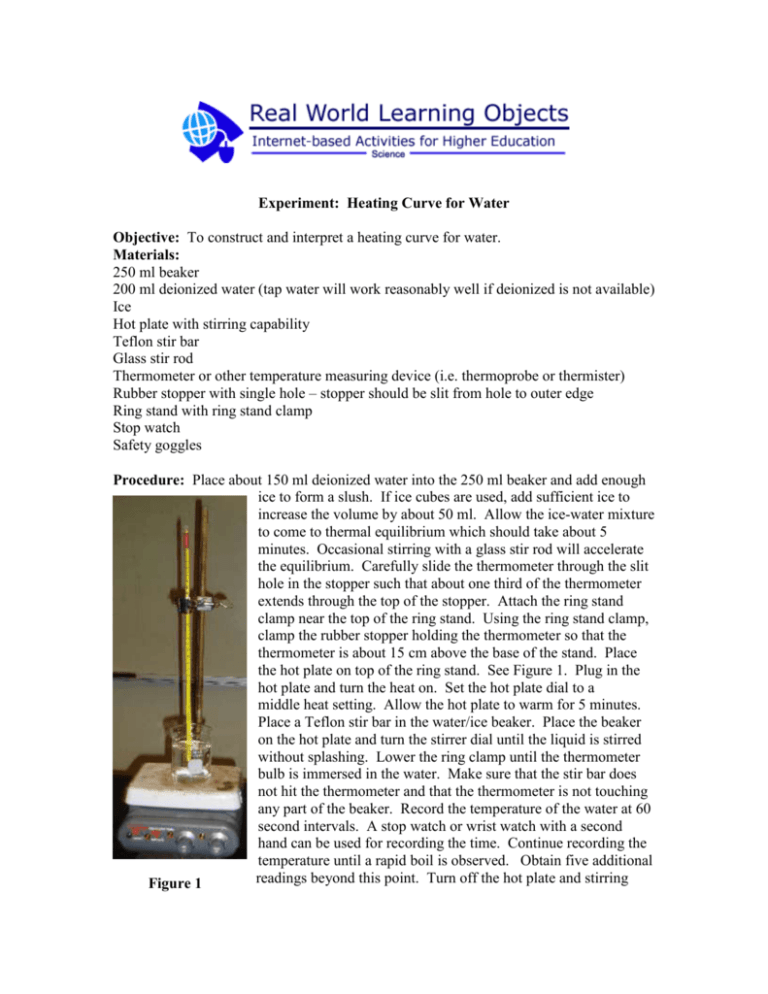
Experiment: Heating Curve for Water Objective: To construct and interpret a heating curve for water. Materials: 250 ml beaker 200 ml deionized water (tap water will work reasonably well if deionized is not available) Ice Hot plate with stirring capability Teflon stir bar Glass stir rod Thermometer or other temperature measuring device (i.e. thermoprobe or thermister) Rubber stopper with single hole – stopper should be slit from hole to outer edge Ring stand with ring stand clamp Stop watch Safety goggles Procedure: Place about 150 ml deionized water into the 250 ml beaker and add enough ice to form a slush. If ice cubes are used, add sufficient ice to increase the volume by about 50 ml. Allow the ice-water mixture to come to thermal equilibrium which should take about 5 minutes. Occasional stirring with a glass stir rod will accelerate the equilibrium. Carefully slide the thermometer through the slit hole in the stopper such that about one third of the thermometer extends through the top of the stopper. Attach the ring stand clamp near the top of the ring stand. Using the ring stand clamp, clamp the rubber stopper holding the thermometer so that the thermometer is about 15 cm above the base of the stand. Place the hot plate on top of the ring stand. See Figure 1. Plug in the hot plate and turn the heat on. Set the hot plate dial to a middle heat setting. Allow the hot plate to warm for 5 minutes. Place a Teflon stir bar in the water/ice beaker. Place the beaker on the hot plate and turn the stirrer dial until the liquid is stirred without splashing. Lower the ring clamp until the thermometer bulb is immersed in the water. Make sure that the stir bar does not hit the thermometer and that the thermometer is not touching any part of the beaker. Record the temperature of the water at 60 second intervals. A stop watch or wrist watch with a second hand can be used for recording the time. Continue recording the temperature until a rapid boil is observed. Obtain five additional readings beyond this point. Turn off the hot plate and stirring Figure 1 function when data recording is complete. Allow the beaker to cool before attempting to remove it from the hot plate.
